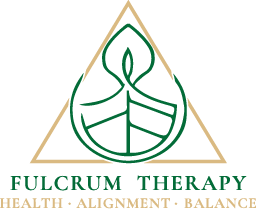Chiropractic care, a holistic approach that primarily centers on spinal health and its connection to the nervous system, has expanded its scope to encompass the entire body’s anatomy and musculoskeletal system.
While chiropractors are adept at addressing various ailments beyond the spine, it’s crucial to acknowledge potential side effects associated with chiropractic adjustments.
This drug-free method has shown remarkable effectiveness in alleviating musculoskeletal conditions, making it a primary choice for mechanical back pain treatment.
However, like any medical or therapeutic intervention, chiropractic adjustments can lead to their own set of risks.
In this article, we will explore the side effects linked to chiropractic adjustments, shedding light on what you should know about this practice.

Table of Contents
ToggleMedical Side Effects Definition
In medical conditions, a side effect is an unwanted symptom that occurs as a result of a medical treatment. This can include prescription medications, over-the-counter (OTC) drugs, complementary and alternative therapies, and surgery.
Side effects can range from mild and temporary to severe and life-threatening. They can be caused by the way the treatment works, by the interaction of different treatments, or by the individual’s own body chemistry.
In the medical world, side effects are always discussed with the patient prior to them receiving a treatment.
In our office, we conduct a thorough assessment and interview to ensure you are not at risk for any major side effects before rendering treatment.
Mild side effects are also discussed with our patient and when the benefits of the treatment outweigh the risk of the side effects, treatments are provided.
In chiropractic, the benefit of being pain free and feeling better far outweighs the minimal side effects common with chiropractic care.
Therefore, many individuals choose to receive chiropractic and other manual therapy techniques as they feel much better after these treatments.
Chiropractic Care Possible Side Effects
The most common side effects of chiropractic care include:
Soreness or Discomfort 24-48 hours post treatment
Headache
Fatigue or Tiredness after treatment for 24-48 hours
Bruising at the side of the treatment
Chiro can also have some serious but extremely rare side effects as follows:
Herniated Disk
Stroke
Nerve Damage

However, chiropractic is a safe treatment option when performed by a trained and licensed chiropractor.
Important Tip: If ANYTIME you experience ANY SIDE EFFECTS after a chiropractic adjustment, it is SO IMPORTANT to talk to your chiropractor. They can help you determine if the side effects are serious and if you need medical attention.
Mild Aching or Soreness
This is the most common side effect, and it usually occurs in the area that the chiropractor may have worked on.
Chiropractic soreness or post-adjustment soreness typically arises due to the manipulation of the joints, muscles, and soft tissues during the adjustment process. The soreness is similar to what you might feel after engaging in a new or strenuous physical activity.
This discomfort can show itself in different ways, such as a dull ache, tenderness, or stiffness in the treated area. It usually emerges within a few hours or up to a day after the adjustment and may last for a few hours up to a couple of days.
In most cases, the discomfort is mild and manageable without requiring any specific treatment.
Headaches
Headaches can be a potential side effect of chiropractic care, although they are relatively uncommon. Some individuals may experience headaches after chiropractic adjustments or muscle release for various reasons:
High tension in muscles of their neck that were released
Post-treatment soreness that may lead to a headache
Being prone to headaches

It’s important to note that these headaches are usually short-lived and self-limiting and they typically resolve within a few hours to a couple of days.
Applying ice or heat packs, rest, and staying hydrated can help alleviate the discomfort.
However, if the headaches persist or worsen, it is advisable to consult with your chiropractor or healthcare provider for further evaluation and guidance.
Fatigue
Although it is not uncommon to feel fatigue or tiredness after a chiropractic session, there are a few possible reasons for this:
Inhibited nervous system
High stressed body
Release of toxins
Dehydrated body
A chiropractic adjustment in particular stimulates the nervous system. If the nervous system was under-stimulated or some nerves were inhibited, an adjustment may have an overall fatiguing effect on the body.
Furthermore, if the body is dehydrated or highly stressed, manual therapy techniques will release endorphins and other neurochemical that may cause tiredness, signaling your body that it needs rest for healing to occur.
Minor Swelling or Bruising
With any type of manual therapy that applies pressure to specific parts of the body, minor swelling and bruising may occur.
Bruising with adjustments is extremely uncommon, however, other massage techniques used by your chiropractor may cause some bruising on the site of the treatment.
Bruising is an indication of pressure applied to a specific spot of the body and is not necessarily associated with a negative outcome.

Similarly, bruising or red marks can occur after a cupping treatment done by your chiropractor. This is indicative of blood to the area which in fact stimulates healing and removal of undesirable chemicals stored under the skin and the muscles.
The bruising is usually mild and goes away on its own within a few days.
If you experience significant or concerning bruising after chiropractic treatment, it is recommended to contact your chiropractor for guidance. They can assess the situation, help you determine the cause of the bruising, and provide appropriate advice or refer you to a healthcare professional if necessary.
Why is it Important to See a Professional Chiropractor?
In order to receive professional and safe chiropractic care while reducing the treatment side effects and risks, it is important to do your research and find a qualified, licensed chiropractor with a high reputation.
Here are some tips for choosing a professional chiropractor:
Make sure the chiropractor is licensed by the province in which they practice and their license is in good standing by checking the website of the College of Chiropractors of BC.
Read about the chiropractor’s education and experience, continuing education courses they have engaged with and previous patient experience through testimonials and reviews.
Ask about the chiropractor’s philosophy of care, if they provide home rehab exercises and patient education.
Make sure you feel comfortable with the chiropractor and you have a good trusting relationship with them.
At Fulcrum Therapy, we help you achieve a healthy, pain-free active life. You can expect to get a completely customized treatment session performed by an experienced Coquitlam Chiropractor based on your specific condition. Book your appointment online or give us a call.

